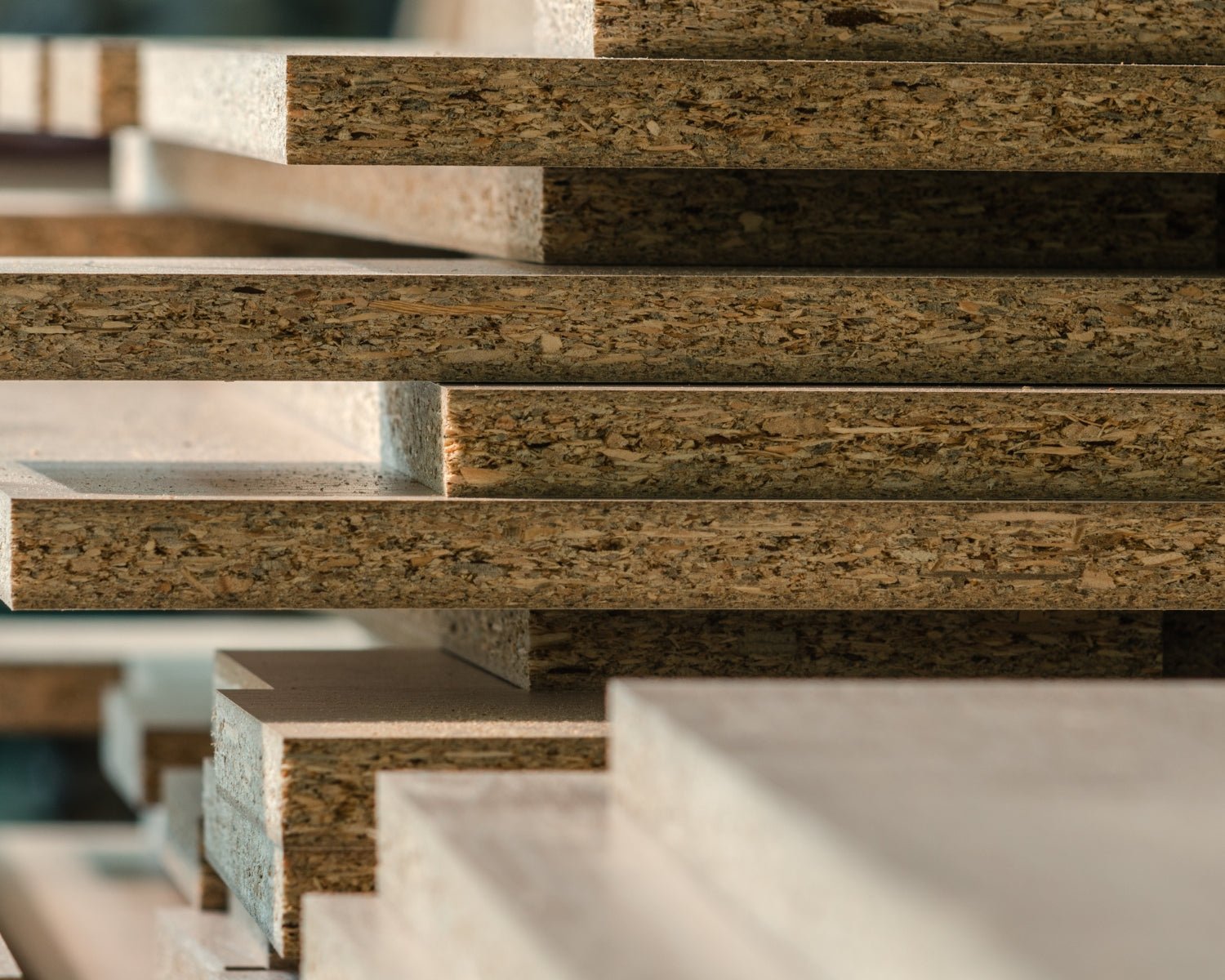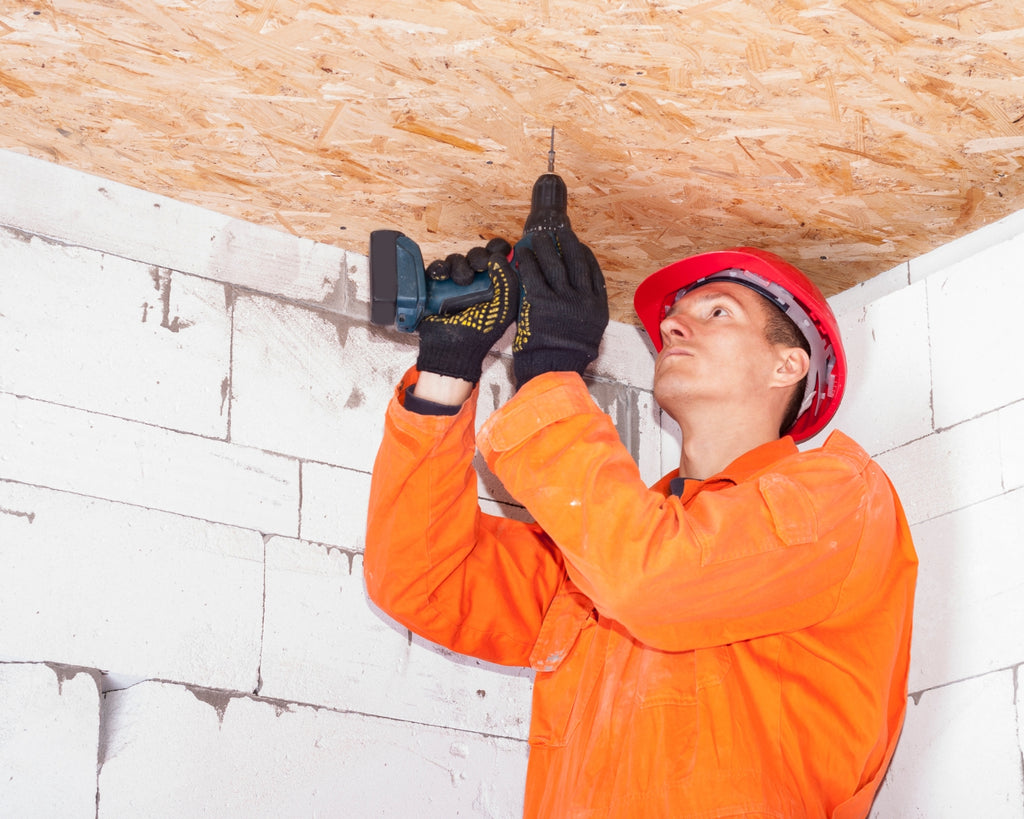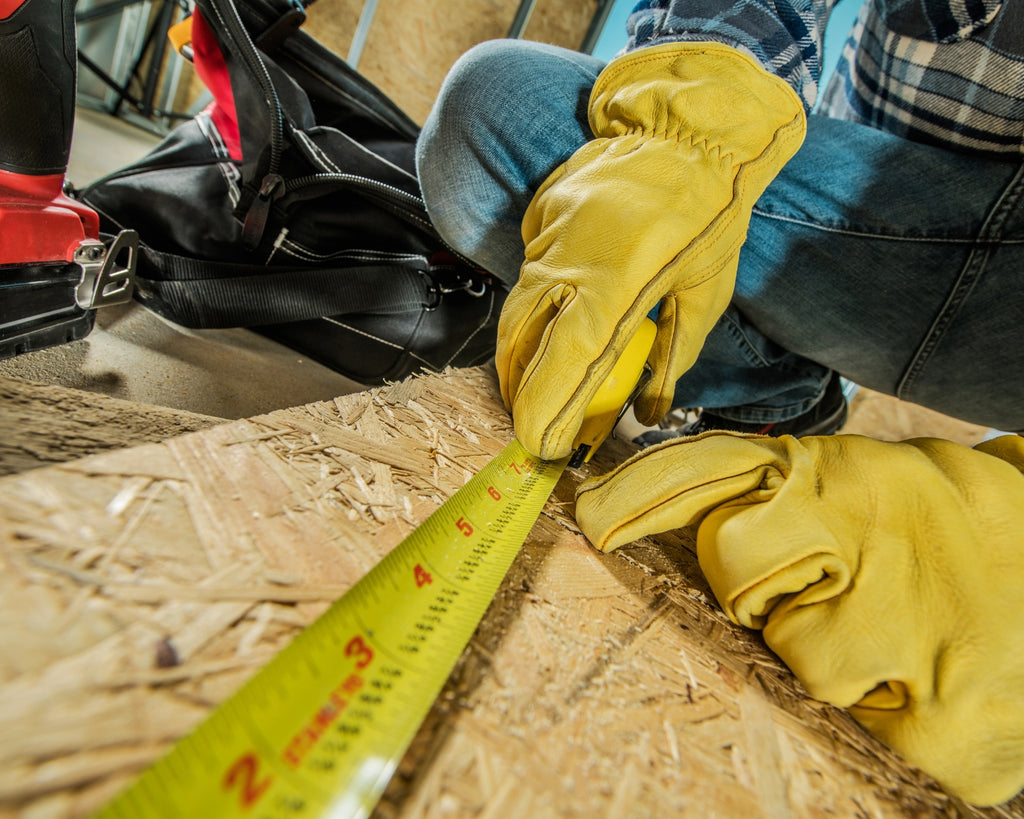
Building Basics: Exploring the Versatility of OSB Boards
Explore the remarkable strength and versatility of OSB boards for your construction needs. OSB, or Oriented Strand Board, offers exceptional durability and moisture resistance, making it ideal for various applications. Compared to plywood, OSB is a cost-effective choice with consistent strength. Use OSB for flooring, sheathing, and blocking to enhance stability and structural support. With various sizes and strengths available, OSB is a reliable option for your projects. Facilitate timely procurement and compare prices for best results. Incorporating OSB boards guarantees a sturdy and cost-effective solution. Harness the potential of OSB in your constructions!

Key Takeaways
- OSB boards offer exceptional durability and strength for construction projects.
- Versatile material suitable for flooring, sheathing, blocking, and structural support.
- Cost-effective alternative to plywood with consistent strength in all directions.
- Available in various sizes, thicknesses, and strengths for different applications.
- Enhances construction efficiency, stays within budget, and maintains quality standards.
What Is Osb?
If you're curious about OSB, it's a type of engineered wood panel made by pressing together strands or flakes of wood with adhesive. Oriented Strand Board, commonly known as OSB, is widely used in the building industry due to its strength and versatility. Unlike traditional plywood, OSB is made by layering and compressing these wood strands, resulting in a durable and cost-effective material for various construction projects.
When it comes to building with OSB, this panel offers excellent structural performance. Its composition provides uniform strength in all directions, making it ideal for flooring, wall sheathing, and roof decking. Additionally, OSB panels are known for their dimensional stability, meaning they're less likely to expand or contract significantly with changes in humidity or temperature.

Benefits of OSB Boards
OSB boards offer exceptional durability and strength for a wide range of construction applications. Made from engineered wood products, OSB consists of resin-bonded wood strands compressed together under heat and pressure. This manufacturing process gives OSB boards excellent structural assurance, making them ideal for sheathing, subflooring, and roofing applications.
Compared to traditional plywood, OSB boards are more cost-effective due to their manufacturing process, where smaller wood strands are utilized efficiently. The resin used in OSB boards also makes them more resistant to moisture, preventing warping or delamination commonly seen in plywood. Additionally, the consistent density of OSB boards guarantees uniform strength across the entire panel, reducing the likelihood of weak spots.
Furthermore, OSB's engineered composition allows for larger panel sizes than plywood, enabling faster installation and reducing the number of seams in a structure. This feature not only saves time during construction but also enhances the overall structural assurance of the building.
OSB Vs. Plywood
When evaluating OSB boards and plywood, durability and cost-efficiency are key factors to take into consideration. Here are some essential points to ponder:
- OSB vs. Plywood: OSB is generally more economical than plywood.
- Sheathing: Both OSB and plywood can be utilized for sheathing, but OSB tends to be more commonly used due to its cost-effectiveness.
- Thickness: Plywood is typically available in greater thickness options compared to OSB.
- Load-bearing: Plywood is often preferred for applications requiring higher load-bearing capacity.
- Mechanical Properties: OSB and plywood have different mechanical properties; plywood is known for its strength and stiffness, while OSB offers consistent strength in all directions.
Considering these factors will help you make an informed decision when selecting between OSB and plywood for your construction projects.
OSB for Flooring
Consider using OSB boards for flooring due to their affordability and versatility in various construction projects.
OSB, or oriented strand board, is a cost-effective alternative to plywood for subflooring and underlayment. OSB products are engineered wood panels made by compressing wood strands with adhesive resins, resulting in a strong and durable material suitable for flooring applications.
When installing OSB for flooring, make sure the panels are properly acclimated to the environment to prevent warping or buckling after installation. Additionally, stagger the seams between panels to enhance structural integrity and minimize flexing. OSB can be easily cut to fit around obstacles or irregular shapes, making it a flexible option for flooring projects.
For best performance, consider using tongue-and-groove OSB panels for seamless installations that prevent squeaks and gaps in the floor. To end, finish the OSB flooring with appropriate coverings like carpet, hardwood, or laminate to enhance both the appearance and durability of the floor.
With its affordability and versatility, OSB is a practical choice for various flooring needs.

OSB for Sheathing
To enhance the structural integrity of your building, utilize OSB boards for sheathing in your construction projects. OSB sheathing is a popular choice for wall sheathing in both interior and exterior walls. When considering using OSB for sheathing, here are some key points to keep in mind:
- Durability: OSB sheathing provides excellent strength and durability, making it a reliable choice for your building projects.
- Moisture Resistance: Engineered to resist moisture, OSB sheathing is a suitable option for exterior applications, protecting your building from the elements.
- Cost-Effective: Compared to other sheathing materials, OSB is a cost-effective option that doesn't compromise on quality.
- Engineer Approved: OSB sheathing meets standard engineering requirements, ensuring your building is up to code.
- Versatile: Whether you're constructing a new building or renovating an existing one, OSB sheathing offers versatility in various construction applications.
OSB for Roofing
Enhance your building's structural integrity by opting for OSB boards for roofing applications. OSB, or Oriented Strand Board, is a cost-effective alternative to plywood for roofing projects.
When selecting OSB for roofing, consider the thickness of the boards to guarantee they can support the anticipated load. The thickness of OSB boards commonly used for roofing ranges from 7/16 inch to 23/32 inch, with thicker boards offering increased strength and durability.
In terms of price, OSB boards are generally more affordable than plywood, making them a budget-friendly option for roofing projects. Additionally, OSB boards are known for their ability to span long distances without sagging, providing structural support for roofs. This spanning capability can help reduce the need for additional support structures, saving both time and money during construction.
OSB for Wall Sheathing
When using OSB for wall sheathing, make sure the boards are correctly installed for best structural support. OSB is a versatile building material commonly used in wall sheathing due to its strength and cost-effectiveness. Here are some key points to keep in mind when using OSB for wall sheathing:
- Structural Support: OSB provides excellent structural support when properly installed.
- Moisture Resistance: Guarantee proper sealing and protection against moisture to prevent damage.
- Insulation: OSB can enhance insulation properties when used in conjunction with other materials.
- Ease of Installation: OSB boards are easy to handle and install, making the process efficient.
- Cost-Effective: Compared to other materials, OSB is a cost-effective option for wall sheathing applications.
OSB Panel Applications
For various construction projects, consider utilizing OSB panels as a durable and cost-effective building material. OSB panel applications are versatile and can be used for various purposes in construction.
When it comes to wall applications, OSB panels provide excellent strength and stability, making them ideal for sheathing and structural support. In roof decking, OSB panels are commonly used due to their ability to withstand heavy loads and provide a solid base for roofing materials.
Additionally, OSB panels can also be used for floors, offering a sturdy and reliable surface for walking and supporting furniture. Their affordability compared to traditional lumber makes them a popular choice for many builders.
Whether used for wall applications, roof decking, or flooring, OSB panels provide a practical solution that meets the demands of modern construction projects. Consider incorporating OSB panels into your next building project to benefit from their durability and cost-effectiveness.
OSB for Blocking
Consider using OSB panels for blocking in your construction projects for added structural support and versatility. When it comes to blocking, OSB (Oriented Strand Board) is a reliable product that can be used in various ways to enhance the strength and stability of your walls and structures.
Here are some reasons why you should consider using OSB for blocking:
- Enhanced Stability: OSB provides excellent stability for your walls and structures, ensuring they remain robust over time.
- Cost-Effective: Using OSB for blocking is a cost-effective solution that doesn't compromise on quality.
- Easy to Work With: OSB panels are easy to cut and install, making the blocking process efficient.
- Versatile Applications: Whether you need to block spaces between studs or reinforce corners, OSB is a versatile product.
- Structural Support: OSB blocking adds essential support to your walls, enhancing their overall strength and durability.
Incorporating OSB for blocking in your construction projects can significantly enhance the structural integrity of your walls while offering a cost-effective and versatile solution.
OSB Product Varieties
To explore the variety of OSB products available, it's important to understand the different types and compositions that cater to various construction needs. OSB, or Oriented Strand Board, comes in various product varieties tailored to specific applications. These products are made by compressing and bonding wood strands together with resin under high pressure and temperature. One common type is the TG OSB subfloor, which is designed for sub-flooring installations. TG OSB subfloors have tongue-and-groove edges for easy fitting and improved structural integrity.
When selecting OSB products, it's essential to take into account the specification requirements of the project. Different OSB varieties offer varying levels of strength, moisture resistance, and fire ratings. Understanding these specifications will make sure the chosen OSB product performs optimally in its intended application.
Whether you need OSB for sheathing, flooring, or roofing, there's a product variety suited to your construction needs. By familiarizing yourself with the different types of OSB available, you can make informed decisions to achieve durable and reliable construction results.
OSB Board Properties
Exploring the composition and characteristics of OSB boards can provide valuable insights into their suitability for different construction applications. OSB boards are known for their unique properties that make them a popular choice in the construction industry. Here are some key points to ponder:
- Layered Construction: OSB boards are composed of multiple layers of wood strands or flakes, which are compressed and bonded together to form a strong and durable panel.
- Nominal Size: OSB boards typically come in standard sizes, with the most common being 4 feet by 8 feet, although other sizes are also available to meet specific project requirements.
- Properties: OSB boards exhibit excellent dimensional stability and strength, making them ideal for various structural applications.
- Continuous Panels: Unlike plywood, OSB boards can be manufactured in larger, continuous panels, reducing the need for joints and improving overall structural integrity.
- Versatile Applications: Due to their properties and cost-effectiveness, OSB boards are widely used in flooring, roof decking, wall sheathing, and other construction projects.
OSB Specifications
Having understood the composition and properties of OSB boards, now let's shift our focus to the specific OSB specifications that play a significant role in determining their suitability for different construction projects. OSB boards come in various lengths, widths, and thicknesses, offering versatility for different applications. The length of OSB boards commonly ranges from 8 to 12 feet, while widths are typically 4 feet. However, specialty OSB boards can be found in wider widths for specific needs. Thicknesses vary from 7/16 inch to 1 inch, with thicker boards providing increased strength and durability.
When selecting OSB boards for your project, it's important to take into account the intended application. Thicker boards are ideal for projects requiring more structural support, such as subflooring and wall sheathing. On the other hand, thinner OSB boards are suitable for projects where weight is a concern, like furniture or decorative paneling. By understanding these specifications, you can choose the right OSB boards to meet the requirements of your construction project.
OSB Span Ratings
What're the key factors influencing OSB span ratings? OSB span ratings are critical in determining the maximum distance a specific OSB board can span without experiencing structural issues. Here are some important points to keep in mind:
- OSB Type: Different types of OSB have varying span ratings depending on their composition and intended use.
- Capacity: Span ratings indicate the load capacity an OSB board can support over a given distance.
- Splitting: Factors like fastener type and spacing can impact an OSB board's susceptibility to splitting along the span.
- Rectangular vs. Square: The shape of the OSB board plays a role in determining its span rating, with rectangular boards having different ratings than square ones.
- Safety: Exceeding the recommended span ratings can compromise the structural integrity of the building, posing safety risks.
Understanding these factors is essential for ensuring the proper and safe utilization of OSB boards in construction projects.
OSB Availability
When sourcing materials for your construction project, consider the current availability of OSB in the market to guarantee timely procurement.
OSB boards are widely available both in physical stores and online retailers. Checking with your local home improvement store is a good starting point to inquire about their inventory. Many stores keep a healthy stock of OSB due to its popularity in construction projects.
Additionally, online platforms offer a convenient way to access a wider variety of OSB options and compare prices. Ensuring the availability of OSB boards before starting your project will help you plan effectively and avoid any delays due to material shortages.
Guaranteeing that the necessary amount of OSB is in stock or readily accessible will streamline your construction timeline. By checking availability in-store and online, you can confidently move forward with your project knowing that the essential materials are within reach.
OSB Price Comparison
Compare prices of OSB boards across different retailers to find the best deal for your construction project. When looking to purchase OSB boards, conducting a price comparison can help you save money. Here are some tips to bear in mind:
- Check Online Retailers: Websites like Amazon or Home Depot often offer competitive prices on OSB boards.
- Visit Local Hardware Stores: Don't forget to check prices at your nearby hardware stores like Lowe's or Menards.
- Look for Bulk Discounts: Some retailers provide discounts when buying OSB boards in bulk quantities.
- Compare Quality: While comparing prices, also evaluate the quality of the boards to ensure they meet your building requirements.
- Consider Seasonal Sales: Keep an eye out for seasonal sales or promotions that could further reduce the price of OSB boards.
Using OSB in Construction
Using OSB boards in construction projects enhances structural integrity and cost-effectiveness. OSB boards, known for their versatility, are commonly used in various building basics due to their strength and affordability. When utilising OSB boards in construction, you benefit from a material that's durable and can withstand the demands of different applications. Whether you're framing walls, building roofs, or constructing floors, OSB boards offer a reliable solution that meets industry standards.
In construction projects, the versatility of OSB boards shines through as they can be easily cut and shaped to fit specific design requirements. This adaptability makes them ideal for creating custom structures while maintaining overall strength. Additionally, OSB boards contribute to the efficiency of the construction process by providing a consistent and uniform material that's easy to work with.
Incorporating OSB boards into your construction endeavour's not only guarantees a sturdy end result but also helps you stay within budget without compromising on quality. Make the most of the benefits offered by OSB boards to elevate your construction projects to new levels of excellence.
Conclusion
To sum up, OSB boards offer exceptional versatility in construction projects. From flooring to sheathing, OSB provides a cost-effective and durable option.
So, whether you're building a new home or renovating an existing structure, consider the benefits of using OSB. Its strength, stability, and savings make it a savvy choice for savvy builders.
So, seize the opportunity to showcase the superior qualities of OSB in your next project!
